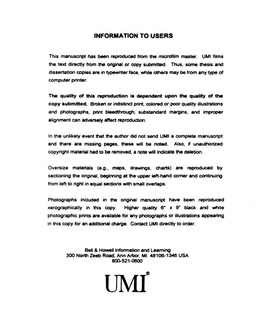| dc.contributor.advisor | Cottom, Daniel, | en_US |
| dc.contributor.author | Scott-douglass, Amy Elizabeth. | en_US |
| dc.date.accessioned | 2013-08-16T12:30:56Z | |
| dc.date.available | 2013-08-16T12:30:56Z | |
| dc.date.issued | 2000 | en_US |
| dc.identifier.uri | https://hdl.handle.net/11244/5974 | |
| dc.description.abstract | A.B.'s Covent Garden Drollery (1672) is important to the history of the anthologized preface. The prologues and epilogues in the drollery participate in the discourse of the professional woman in theatre, representing women (particularly Restoration actresses) in a way that runs counter to the unsympathetic representation of women in other contemporary drolleries. In this century, several scholars have attributed the drollery to Aphra Behn, and a similar attention to women in the theatre is also evident in her pretexts, which argue for the woman artist' s ability to impersonate across gender lines. | en_US |
| dc.description.abstract | The commendatory poem offered little space for the woman poet. Katherine Philips assumes her politics as the criteria for her right to trade commendatory verse and creates her own discourse of commendation, one which praises those who make restoration and eternal life their cause. Philips appropriates the restorative mode by combining it with the prefatory discourse of the amateur, which images the surreptitiously printed text as an innocent girl who has been deflowered and defaced. "Restoration" is a prominent theme in commendatory verses by Philips, and it recurs in the prefatory materials to the 1667 edition of her Poems. | en_US |
| dc.description.abstract | Prefaces by early modern women writers are often regarded as quasi-autobiographies or as a record of the writer's gender politics. Women's pretexts also need to be read as pieces of literature, rhetoric, and critical thought. The most appropriate methodological approach to women's pretexts is one that combines the strengths of bibliographic studies and feminist criticism. Katherine Philips, Margaret Cavendish, and Aphra Behn inherited both the prefatory conventions of Renaissance men as well as the strategies of Renaissance women writers like Aemilia Lanyer for circumventing the gender bias of the patronymic preface. | en_US |
| dc.description.abstract | Prefaces by Margaret Cavendish, Duchess of Newcastle, are deliberately crafted devices for establishing her public identity as England's first self-crowned female laureate. The prefatory discourse of the self-crowned laureate, which values male commendation and establishes the poet as separate and morally superior, occasionally comes into sharp conflict with those sentiments in Cavendish's prefaces which have been identified as feminist, namely her arguments for women's education and female community. | en_US |
| dc.format.extent | viii, 235 leaves : | en_US |
| dc.subject | English literature 17th century. | en_US |
| dc.subject | Language, Rhetoric and Composition. | en_US |
| dc.subject | Women's Studies. | en_US |
| dc.subject | Women poets. | en_US |
| dc.subject | Literature, English. | en_US |
| dc.subject | Prefaces History and criticism. | en_US |
| dc.subject | English poetry 17th century. | en_US |
| dc.title | Prefacing the poetess: Gender and textual presentation in seventeenth-century England. | en_US |
| dc.type | Thesis | en_US |
| dc.thesis.degree | Ph.D. | en_US |
| dc.thesis.degreeDiscipline | Department of English | en_US |
| dc.note | Adviser: Daniel Cottom. | en_US |
| dc.note | Source: Dissertation Abstracts International, Volume: 61-05, Section: A, page: 1856. | en_US |
| ou.identifier | (UMI)AAI9972512 | en_US |
| ou.group | College of Arts and Sciences::Department of English | |
